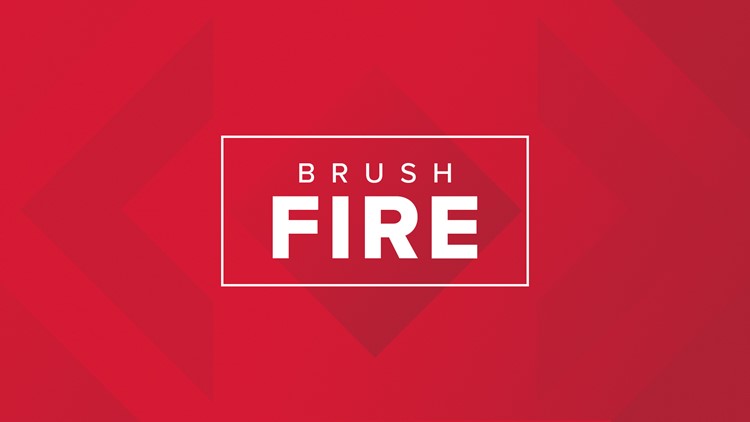Brush Fire Near Potrero Sparks Intense Battle for Fire Crews on SR-94

Fire crews quickly battled a small vegetation fire that burned in San Diego County near State Route 94 on Wednesday.
The fire was west of Potrero near SR-94 and Barrett Smith Road.
Cal Fire says the flames spread from a car fire to nearby vegetation but crews soon stopped the forward rate of spread.
Tips: Preparing for a Wildfire Evacuation
CalFire has built a list of things to have ready in case you and your family are evacuated during any wildfire or disaster.
Ensure your wildfire ‘Go Bag’ includes:
- A 3-day supply of non-perishable food & 3 gallons of water per person
- A map with at least 2 evacuation routes
- Necessary prescriptions or medications
- A change of clothes & extra eyeglasses/contact lenses
- Extra car keys, credit cards, cash, or traveler’s checks
- A first aid kit & sanitation supplies
- A flashlight & battery-powered radio with extra batteries
- Copies of important documents (birth certificates, passports, etc.)
- Pet food & water
Always have sturdy shoes and a flashlight near your bed, ready for sudden night evacuations.
If time allows, consider adding:
- Valuables that are easy to carry
- Family photos and irreplaceable items
- Personal computer data on hard drives and disks
- Chargers for cell phones and laptops
Firefighting terms and what they mean
When wildfires break out across San Diego County, emergency officials use technical terms like "containment" and "forward rate of spread" that can confuse residents trying to understand the threat level. CBS 8 visited CAL FIRE headquarters and spoke with Cal Fire Captain Robert Johnson to decode the terminology that could help residents better assess their safety during wildfire emergencies.
Contained:
Johnson said "contained" means the fire is surrounded by barriers — either fire lines built by crews or natural breaks like roads, lakes and ridges.
When officials report a fire is "25% contained," barriers surround a quarter of the fire's perimeter. But Johnson warns that doesn't mean the fire is 25% extinguished.
"If you have 25% containment, 50% containment, it doesn't mean that we're out of the woods yet. It doesn't mean we're safe. It doesn't mean the fire is completely extinguished, so there still are hot spots that tend to be burning within the perimeter," Johnson said.
The forward rate of spread has been stopped:
Containment percentages can remain static while a fire continues growing, depending on whether the "forward rate of spread has stopped."
"The fire activity has been reduced, and the fire is not actively growing in size. This does not mean the fire is contained or controlled. It just means that the predominant active side of the fire is not actively growing," Johnson explained.
Controlled:
A "controlled" fire means 100% containment with flames extinguished and fuel cleared, though crews continue monitoring for hot spots.
"Once those hot spots are extinguished and safe, then the incident commander may say the fire is now under control," Johnson said.
Out:
Finally, "out" means no hot spots or smoke remain.
"Once a fire has 100% containment lines around the perimeter of the fire and all the hot spots within the fire's perimeter have been extinguished and the fire is controlled, now the fire is considered to be out," Johnson said.
WATCH RELATED: How to know when it's time to go during a wildfire:
What factors contribute to high fire danger in Southern California?
Dry, warm Santa Ana winds
Santa Ana Winds occur when air from the desert region blows westward toward the California coast. This results in dry air that flows est to west over the mountains and towards the valleys and coast of Southern California. Santa Ana winds typically feel warm because as the cool desert air moves down the side of the mountain, it is compressed, which causes the temperature of the air to rise. We tend to see relative humidity plummet and temperatures soar during offshore wind events like this.
These winds create high fire conditions not only for a fire to start but offshore, Santa Ana winds are the perfect fan needed to allow a fire to explode in size once it starts.
Lack of rain, dry vegetation
The water year restarts every year on October 1 and measures the rain totals for the season through the following September. When rain totals are below average, the vegetation that once was green turns brown and dry and can serve as fuel for wildfires. The saturated ground can help mitigate fire risk substantially, but the opposite tends to elevate our fire risk. The sooner and more frequently we see substantial rainfall, the lower our risk of a wildfire starting and spreading rapidly.
Electrical equipment concerns
When a region is in critical fire danger, power companies tend to shut off power in pre-planned ways in order to prevent electrical equipment from sparking or starting fires. It is also because electric consumption tends to climb with warmer temperatures (usually thanks to A/C needs) and can lead to overall stress on the power grid. When you combine the risk of fire with planned power shut-offs, many school districts will close. Schools can also be used as monitoring sites for fire crews in the event of a fire starting.
Post a Comment for "Brush Fire Near Potrero Sparks Intense Battle for Fire Crews on SR-94"
Post a Comment